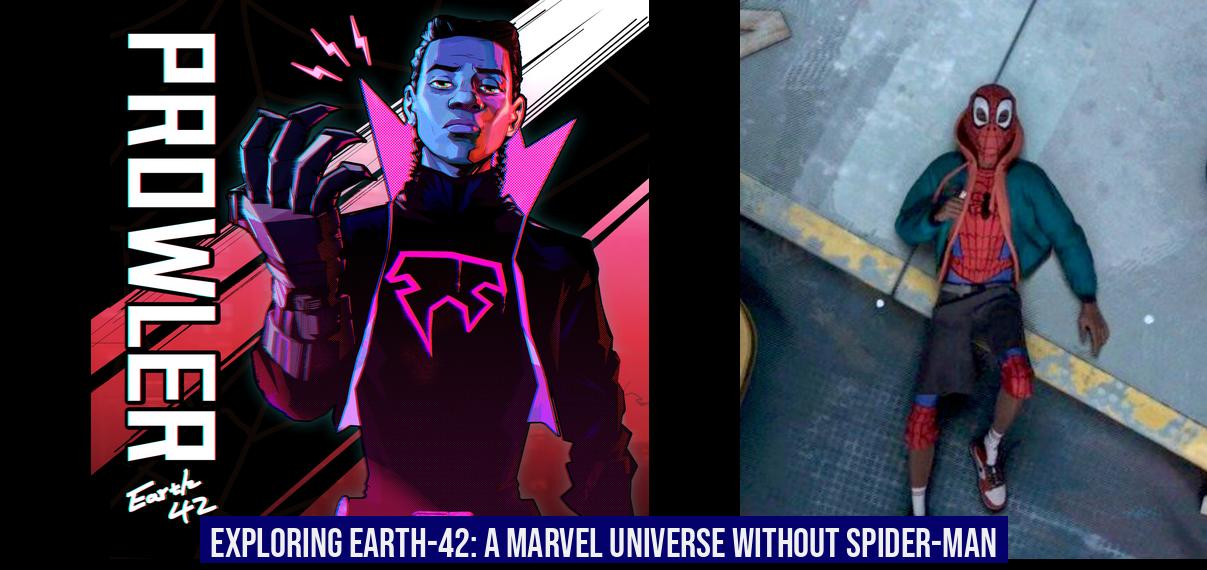Exploring the Web of Earth-42: A Deep Dive into Its Uniqueness
Earth-42 wiki immerses any keen Marvel enthusiast in a universe where Spider-Man never existed, setting off a chain of events that reshapes its landscape. In this captivating reality, the absence of the iconic hero has allowed rampant crime to flourish and propelled the rise of notorious figures, such as the Sinister Six. Let’s delve deeper into the rich history, intriguing residents, and fascinating trivia surrounding Earth-42.
History: The Shadow of Absence
In a critical departure from the familiar Spider-Man narrative, Earth-42 never witnessed the birth of its wall-crawling savior. The reason? The Radioactive Spider that could have bitten its destined hero was inexplicably teleported to another reality. This twist of fate unraveled into escalated crime rates, creating an environment ripe for the emergence of villains. The Sinister Six, in this universe, transcends mere villainy; they morph into a well-organized cartel that asserts control over criminal enterprises, indicating reverberations of lawlessness.
Central to Earth-42’s narrative is Captain Jefferson Morales, whose untimely demise left a profound gap in the Morales family. His legacy carried forward in his nephew, Miles G. Morales, whose journey towards becoming the Prowler signifies the weight of expectation in the shadow of his uncle’s absence. This transformation echoes the familiar theme of legacy, rebuilding identity in the face of adversity.
When an alternate version of Miles Morales inadvertently crosses over from another universe, mistaken identities and the chaotic dynamics of familial ties unveil. Aaron Davis, the paternal figure to Miles G., believes the newcomer is his nephew. This misunderstanding leads to a pivotal moment—an ambush beacons on a rooftop where the unexpected reveal of the alternate Miles ensues. The mere threat of the original Prowler against this new iteration adds dramatic tension, blurring the lines between friend and foe. The environment created by the absence of Spider-Man is a fertile ground for exploring themes of identity, loyalty, and morality.
Residents: Meet the Key Players
In this alternate reality, some residents become crucial players, not just in the context of villainy but also familial drama. At the core is Aaron Davis, the Prowler, who grapples with the harsh realities of raising a nephew in a world dominated by criminality. His complex emotions illustrate paternal instincts weighing heavy against the backdrop of a morally ambiguous reality.
Miles G. Morales stands as a troubling figure, caught between his uncle’s expectations and his fate as the Prowler. Through these characters, the narrative amplifies the themes of responsibility, choice, and the indelible marks of our past shaping our destinies.
Moreover, the evolution of the Sinister Six in this universe can be explored through interactions with key villains, transforming our understanding of villainy in the absence of a hero. Their actions provide insight into how societies adapt—or falter—without figures of justice.
Trivia: Fun Facts to Know
- The Oz Experiment Arachnid No. 42, the spider that bit Miles Morales in the Ultimate Comics Spider-Man series, notably carries the number 42, indicating its experimental designation. This fact not only resonates with fans of the comics but also draws a direct connection to the lore surrounding Earth-42, linking character fates across realities.
- For fans of the comic series, the intriguing detail lies in the backstory of the spider that bit Miles in Earth-1610B. The number on its back is a versatile tieback to Earth-42, encapsulating the collectible nuances for true aficionados of Marvel’s multiverse.
In Conclusion: The Signature of Earth-42
With its unique premise steeped in complexity, Earth-42 wiki adds an exhilarating layer to the Marvel Universe. The intertwining of destinies where the absence of a Spider-Man reverberates through the lives of its residents offers an engaging tableau for fans eager to explore. This reality might lack the familiar web-slinger, but it compensates with equally compelling narratives that illuminate the essence of heroism, choice, and familial relationships underneath the shadow of villainy.
As Marvel continues to weave its intricate tapestry across dimensions, Earth-42 stands as a testament to the idea that even in the absence of a hero, stories can thrive, lessons can be learned, and the complexity of human experience can shine loudly through its characters. For those looking to dive deeper, the Earth-42 saga holds an unexplored treasure trove waiting to be uncovered—one web spin at a time.
What is the significance of Earth-42 in the Marvel universe?
Earth-42 is a unique reality where Spider-Man never existed, leading to a rise in crime and the emergence of notorious villains like the Sinister Six. This absence creates a different landscape that reshapes the lives of its residents and the overall narrative.
Who are the key characters in Earth-42?
Central characters include Captain Jefferson Morales, whose death impacts his family, and his nephew, Miles G. Morales, who becomes the Prowler. Aaron Davis, the Prowler, also plays a significant role as he navigates the challenges of raising Miles G. in a crime-ridden environment.
How does the absence of Spider-Man affect the crime rate in Earth-42?
The lack of Spider-Man allows crime to flourish unchecked, resulting in the Sinister Six evolving into a well-organized cartel that dominates criminal enterprises. This shift highlights the consequences of a hero’s absence on societal order.
What themes are explored in the narrative of Earth-42?
The narrative delves into themes of identity, loyalty, and morality, particularly through the struggles of characters like Miles G. Morales and Aaron Davis. It examines how the weight of legacy and familial expectations shape their choices and destinies in a morally ambiguous world.

